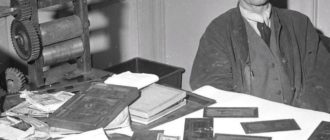
Steampunk most often displays an openly cynical and pessimistic view of people’s lives. Along with this, parodic and comedic motifs are often used, ridiculing greed, vanity, debauchery and social stratification of society.

The main varieties
Steampunk is an extremely popular genre and style, manifestations of which can be found in various areas of popular culture:
- in literature; comics;
- fine arts;
- design; cinematography;
- animations;
- photography;
- the fashion industry;
- computer games;
- music.

Many adherents of steampunk lead an active lifestyle and in every possible way contribute to the further popularization of their hobby. They organize interesting thematic festivals and exhibitions in different parts of the Earth. These events are held on a grand scale, attracting the attention of the media and millions of people.
In world culture, it is customary to distinguish between two main types of steampunk:
- Alternative historical. Displays the life of people in a human society, which in many respects is similar to the real world of the second half of the 19th early 20th centuries, but with some stylistic features. This type of steampunk is an original version of science fiction, which describes an alternative path for the development of mankind.
- Fantasy. In this version of steampunk, a man of the age of steam engines lives next to numerous fairy-tale creatures. It has a place not only for the achievements of science, but also for magic, which manifests itself in a variety of variations.

There is also a division of steampunk into several major sub-genres, including:
- Boilerpunk. In contrast to the traditional aristocratic steampunk, he describes in detail the difficult life of simple hard workers who power a variety of steam technology.
- Clockpunk. In it, instead of the energy of steam, for the functioning of all kinds of machines, complex winding mechanisms automatons are used.
- Western steampunk. In it, the action takes place in a society stylized as the American Wild West.
- Romanticism of gas lamps. In this sub-genre, the way of life of the Victorian era is portrayed with pronounced sympathy and idealization.
- Mannerpunk. Describes people whose life is an endless series of carefree parties, parties and campy dances.

Thanks to the active popularization of steampunk ideas, the above list of subgenres is constantly updated with new options. In many of them, you can find features not only of steampunk, but also of other derivatives of cyberpunk.
Characteristic features of steampunk
The most characteristic and easily recognizable features of steampunk rightfully include:
- Victorian urban setting with factory chimneys, cobblestone pavements and urban slums.
- Costumes of characters corresponding to the spirit of the time of the industrial society (luxurious dresses for ladies, tailcoats and top hats for men).
- Numerous inventions based not only on real, but also on fictional, pseudo-scientific technologies.
- A huge number of non-electronic computers and mechanisms powered by steam energy.
- The original set of acting characters (maniac criminals, mad scientists, brave travelers, brilliant detectives, feminists, spies, aristocrats, clerks and other interesting personalities).

The use by humans of advanced weapons, vehicles, and even unique samples of artificial intelligence.
Among the supporters of steampunk, the ideas of styling modern household items under the Victorian era are very popular. To realize their original ideas, fans change the appearance of a wide variety of devices and fixtures. They are decorated with gears and levers, valves and leather, polished wood and metal elements. The owners of such items get a great opportunity to openly express their commitment to the steampunk style.

The history of steampunk development
The history of steampunk is not very long, Kevin Wayne Jeter is considered to be the author of the original term steampunk. The American science fiction writer first used the word “steampunk” in a letter to the editors of Locus magazine in April 1987. He coined the term to describe the genre of his work, Night of the Morlocks, a novel set in a Victorian-era fictional world.

With the light hand of Kevin, the name first took root in the literary environment. But already 3 years later, after the publication of the novel “Differential Calculator”, written by William Gibson (William Gibson) and Bruce Sterling (Bruce Sterling), steampunk began to quickly gain popularity among fans of the genre and significantly expanded the scope of its use.
Since the mid-1990s, the steampunk subculture began to take shape, films on this topic appeared at the box office, including The Wild Wild West and The League of Extraordinary Gentlemen.

Literally in one decade, a multi-million army of steampunk fans has formed:
- steampunk musical groups were created;
- successful computer games were developed;
- an original fashion style was formed;
- the first festivals were held.







